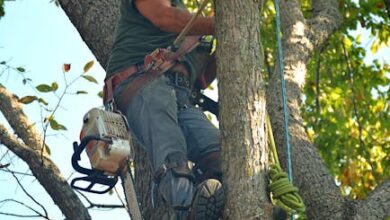The Audacity of the Seven-Minute Grab

The Louvre. Just the name conjures images of artistic grandeur, historical depth, and priceless treasures. Millions flock to its hallowed halls each year, not just to gaze upon masterpieces like the Mona Lisa, but to stand in awe of human ingenuity and cultural heritage. It’s a place that feels, in many ways, impregnable – a fortress protecting the very essence of human history. Which is precisely why the thought of a major jewelry heist within its walls isn’t just a plot point for a Hollywood blockbuster; it’s a chilling reality that has played out, leaving both investigators and the public stunned.
We often romanticize heists, picturing masterminds with elaborate gadgets and daring escapes. But when the target is something as sacred as the Louvre’s collection, particularly its famed crown jewels, the reality is far more complex and unsettling. It forces us to confront uncomfortable questions about security, human nature, and the true value of objects steeped in history. Let’s delve into what such a shocking event teaches us.
The Audacity of the Seven-Minute Grab
Imagine, for a moment, the sheer audacity. In just a breathtaking seven minutes, thieves managed to abscond with a king’s ransom – crown jewels glittering with thousands of diamonds, along with an array of other precious gems. Seven minutes. That’s less time than it takes to brew a pot of coffee, yet it was enough to shatter the illusion of invulnerability surrounding one of the world’s most iconic institutions.
This wasn’t just about monetary value, though that alone was astronomical. These weren’t mere baubles; they were artifacts of immense historical significance, symbols of power, royalty, and a nation’s story. The French Crown Jewels, for example, have a lineage stretching back centuries, each gem potentially witnessing seismic shifts in governance and society. To pluck such items from their display cases is to rip a page from history itself.
The speed of the operation is what truly defines it. It speaks to meticulous planning, perhaps inside knowledge, and certainly a profound understanding of the museum’s layout and security blind spots. It wasn’t a smash-and-grab born of desperation; it was a surgical strike, executed with precision that borders on terrifying efficiency. This kind of theft isn’t just a crime; it’s a statement, a challenge to the very systems designed to protect our most treasured possessions.
Unpacking the Security Lapses: How Could It Happen?
When such a high-profile heist occurs, the immediate aftermath is always a maelstrom of questions. How could something so valuable, in a place so heavily guarded, simply vanish? The answer is rarely simple, often a confluence of factors that expose vulnerabilities in even the most sophisticated security systems.
The Human Element: Both Strength and Weakness
While we rely on technology – cameras, motion sensors, reinforced glass – the human element remains paramount. This can be both a powerful deterrent and the weakest link. Was it an inside job, with someone providing critical information about patrol routes, alarm codes, or even deactivating systems? Or was it an external team that exploited routine lapses, perhaps a guard taking a shortcut, a door left ajar, or an overlooked maintenance schedule?
Human error is an inevitable part of any system. Even the most dedicated staff can have an off day, miss a subtle detail, or fall prey to sophisticated deception. Thieves often spend months, even years, casing a target, observing patterns, and identifying moments of vulnerability. They’re not just looking for a way in; they’re looking for the *easiest* way in, the path of least resistance facilitated by a momentary lapse.
The Challenge of Scale and Legacy
The Louvre is an immense structure, a historical palace that has been repurposed as a museum. Its very architecture, while magnificent, presents unique security challenges. Miles of corridors, countless rooms, and a blend of ancient construction with modern additions can create complex surveillance zones. Retrofitting a centuries-old building with cutting-edge security is a monumental task, often a compromise between preservation and protection.
Moreover, the sheer volume of visitors and exhibits means that security teams are constantly stretched. Distinguishing between a genuine threat and the daily bustle of a bustling museum is an art in itself. This scale can be overwhelming, creating opportunities for those with malicious intent to blend in, observe, and eventually exploit.
Beyond the Bling: The True Cost and Enduring Legacy
The immediate fallout of a Louvre jewelry heist is, of course, the loss of priceless objects. But the true cost extends far beyond the monetary value of diamonds and precious gems. It’s a blow to national pride, a scar on cultural heritage, and a stark reminder of the fragility of even the most protected treasures.
The reputation of the museum takes a hit, and public trust can waver. Investigations are launched, careers are jeopardized, and the global art and antiques market goes on high alert. For a time, every museum around the world re-evaluates its own security protocols, tightening procedures and investing in new technologies. Such an event serves as a very public, very painful case study in risk management.
Even if some items are eventually recovered – a rare feat in high-profile art and jewelry heists – the trauma of the event lingers. The feeling of violation, the knowledge that history itself was, for a brief moment, vulnerable, casts a long shadow. These heists underscore a constant tension: how do we make these incredible objects accessible for public enjoyment and study, while simultaneously ensuring their absolute protection from those who would exploit their value?
The story of a Louvre jewelry heist becomes a legend in its own right, a testament to human cunning and the enduring allure of forbidden treasure. It reminds us that while we strive to create perfect systems, the ingenuity of those determined to break them often keeps pace, if not one step ahead. It’s a fascinating, if disheartening, look into the eternal cat-and-mouse game between protection and predation, one that continues to challenge our understanding of security in an increasingly complex world.





